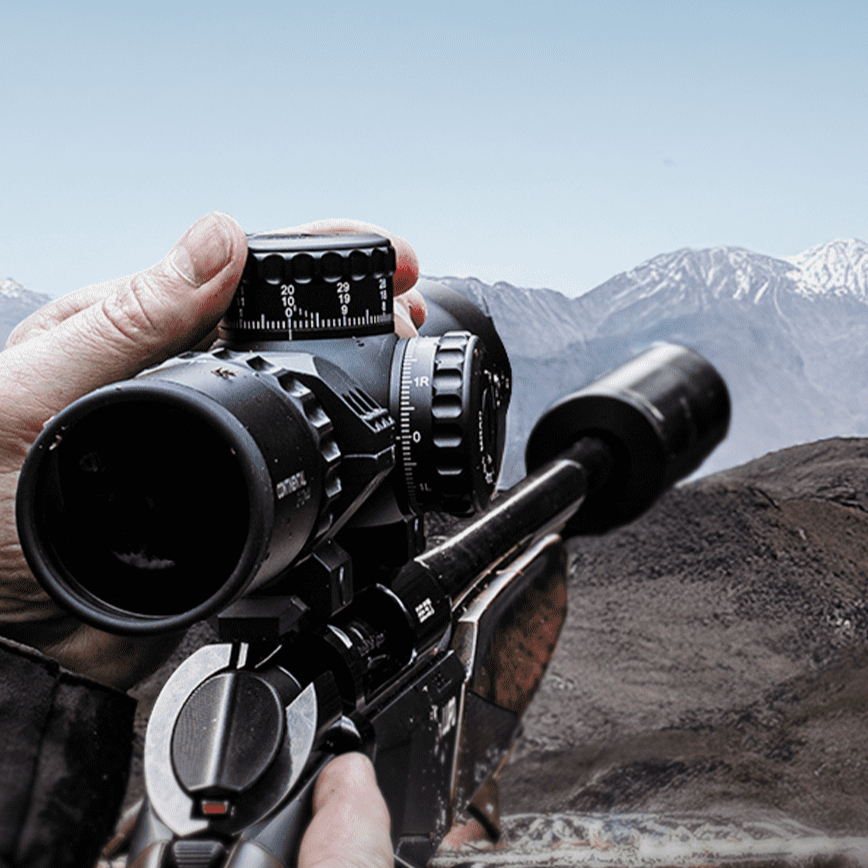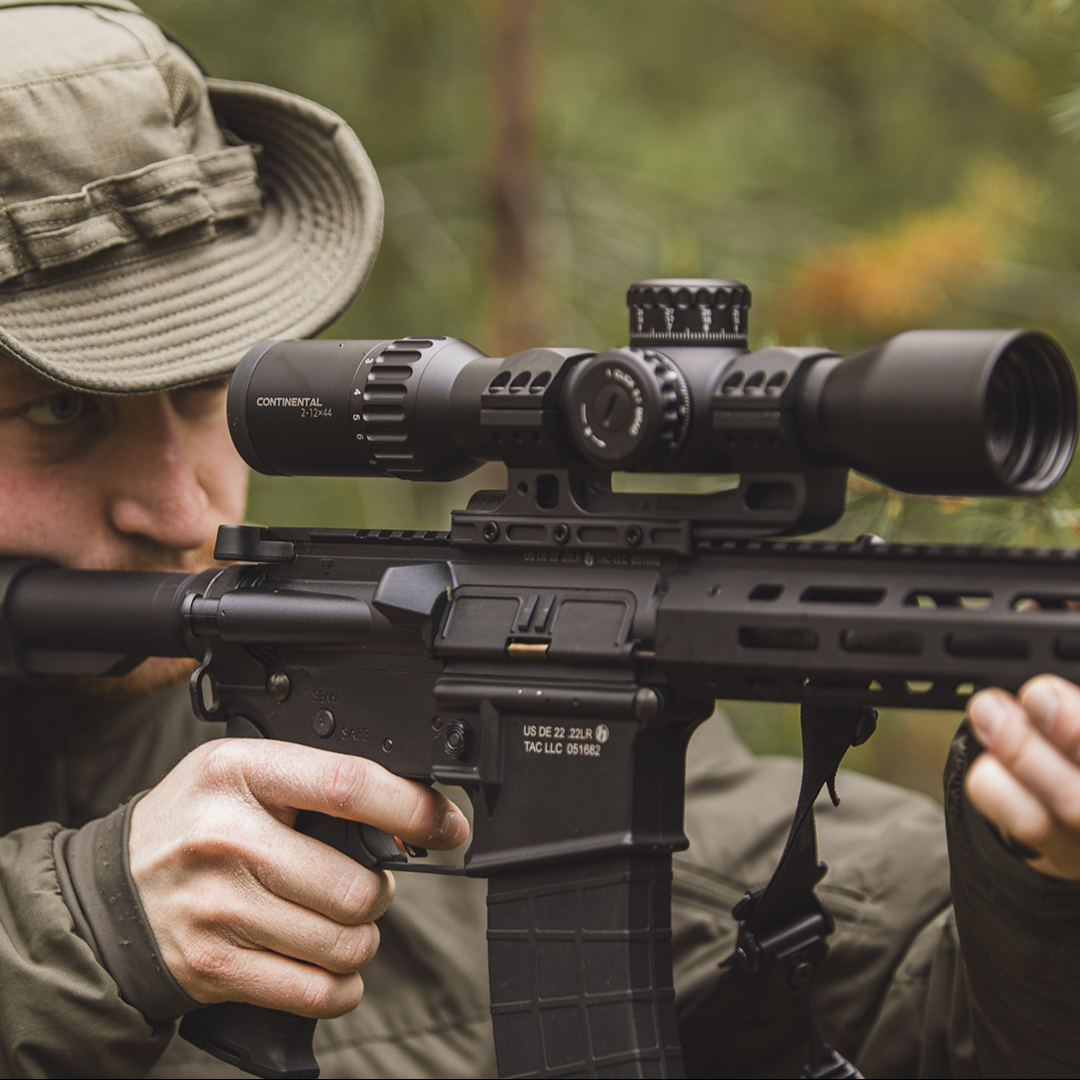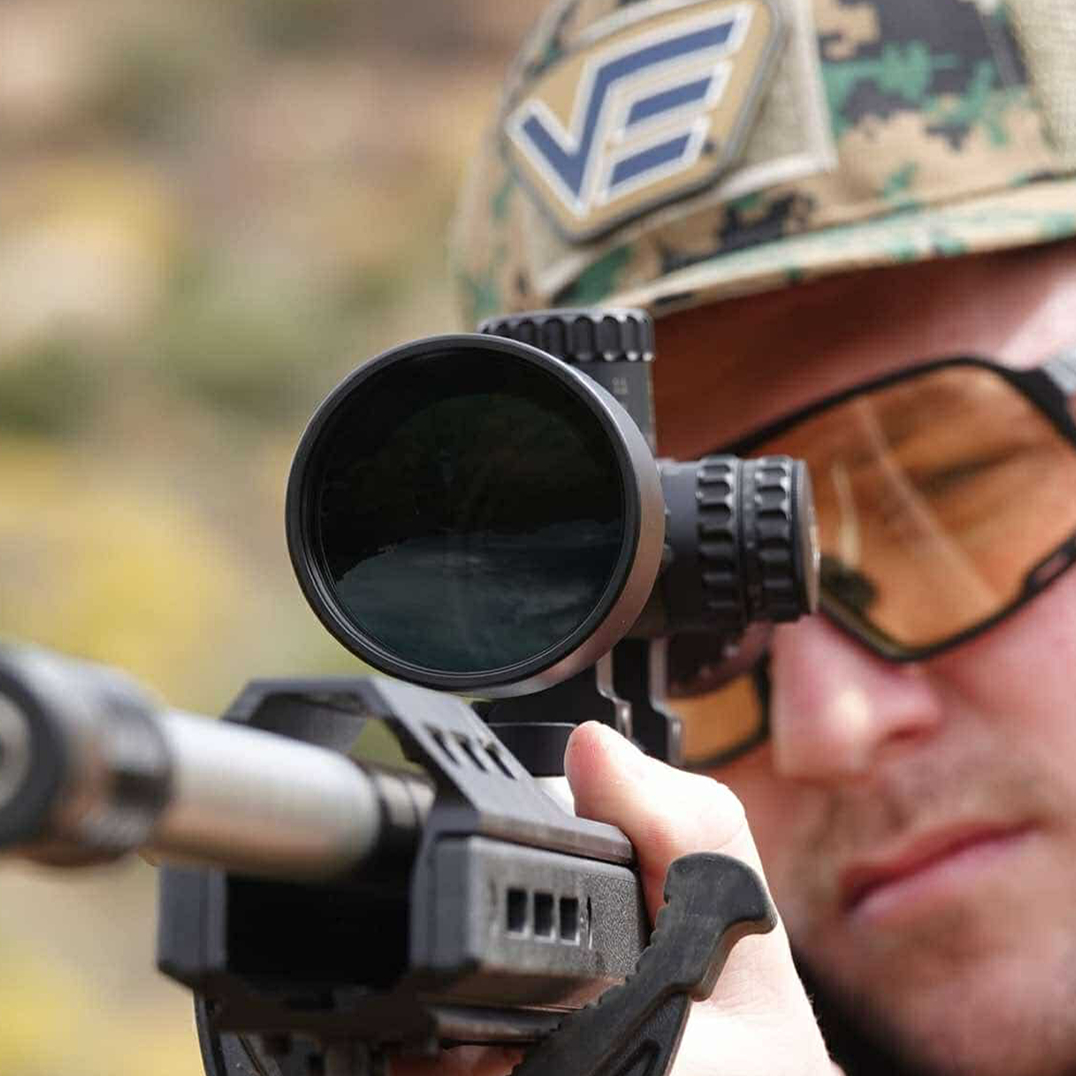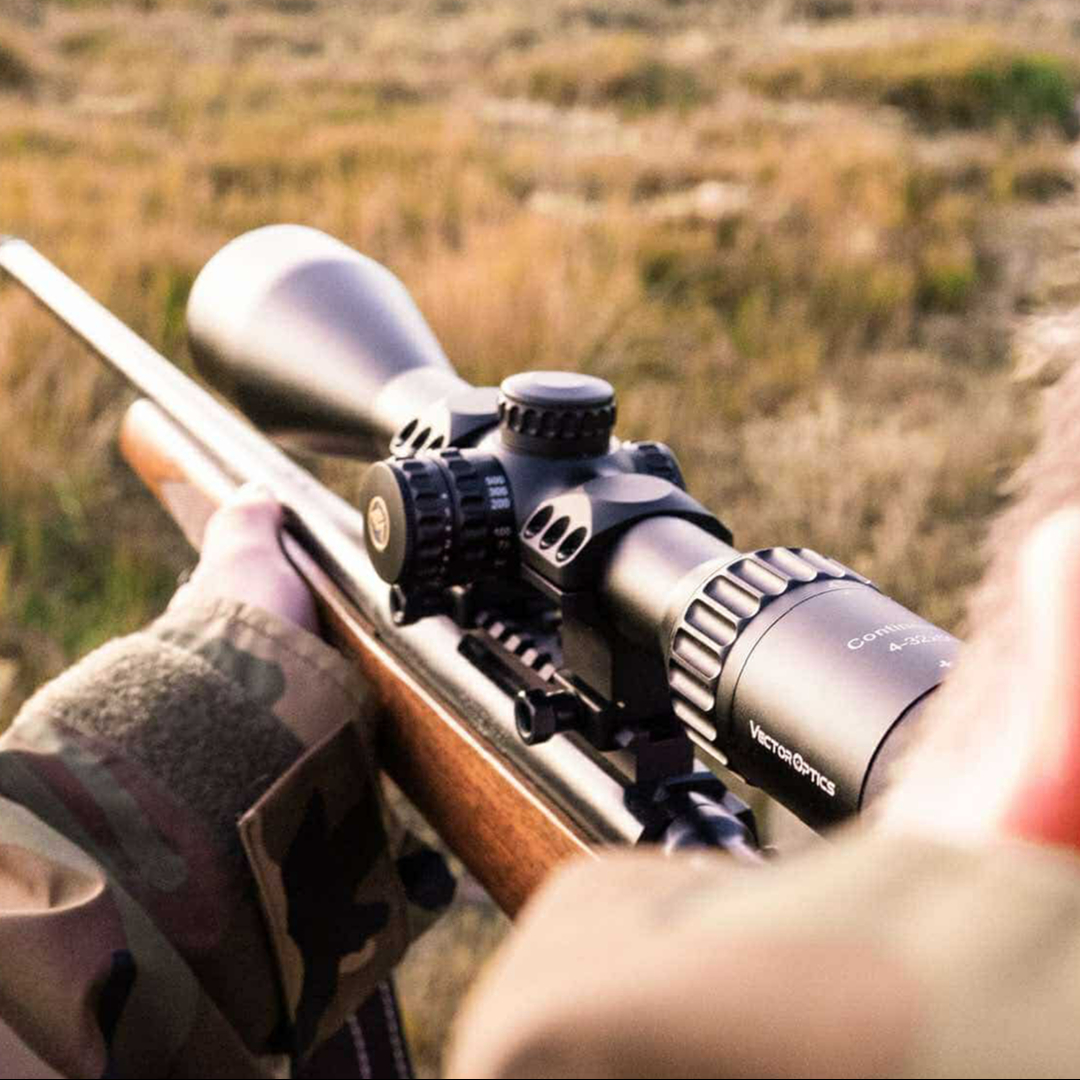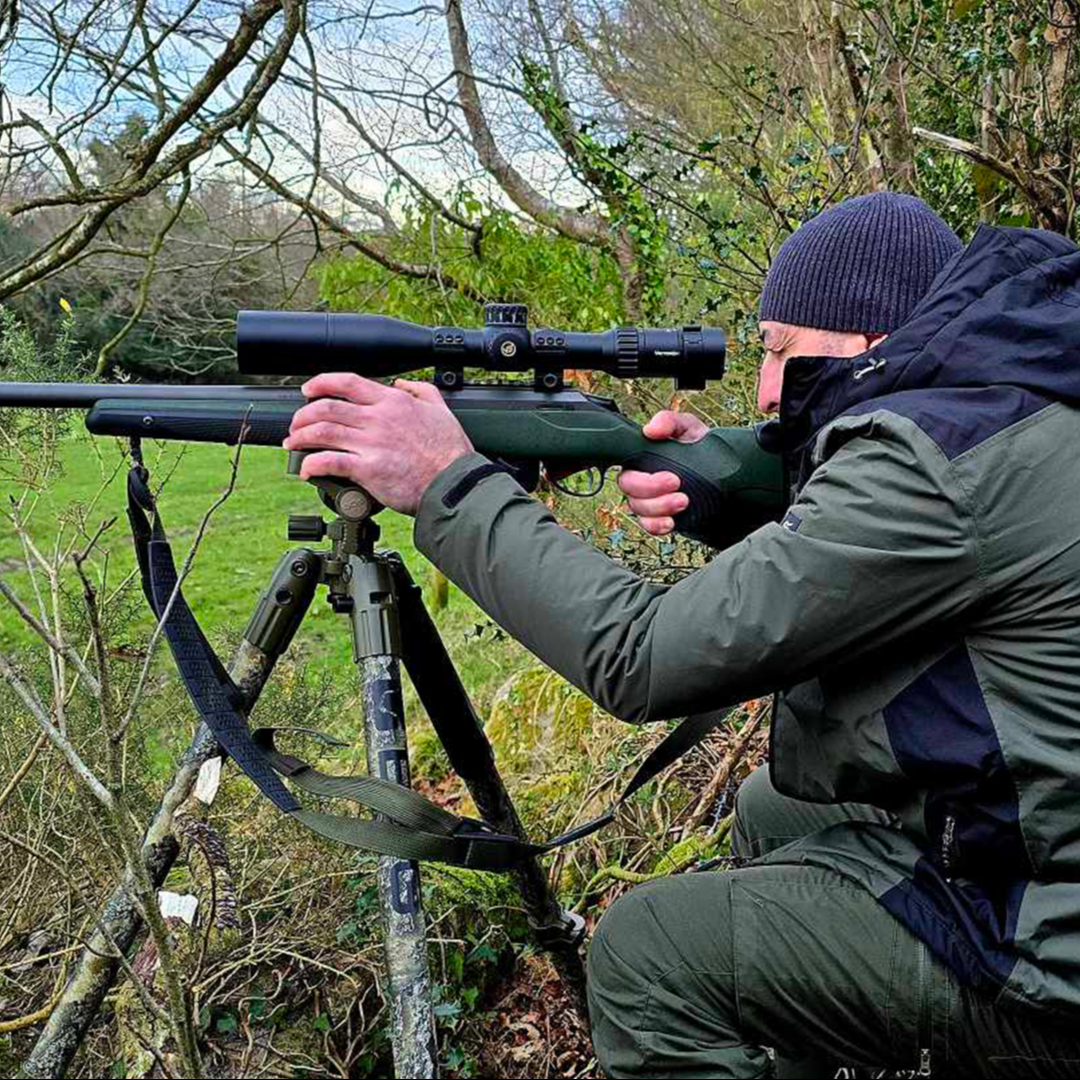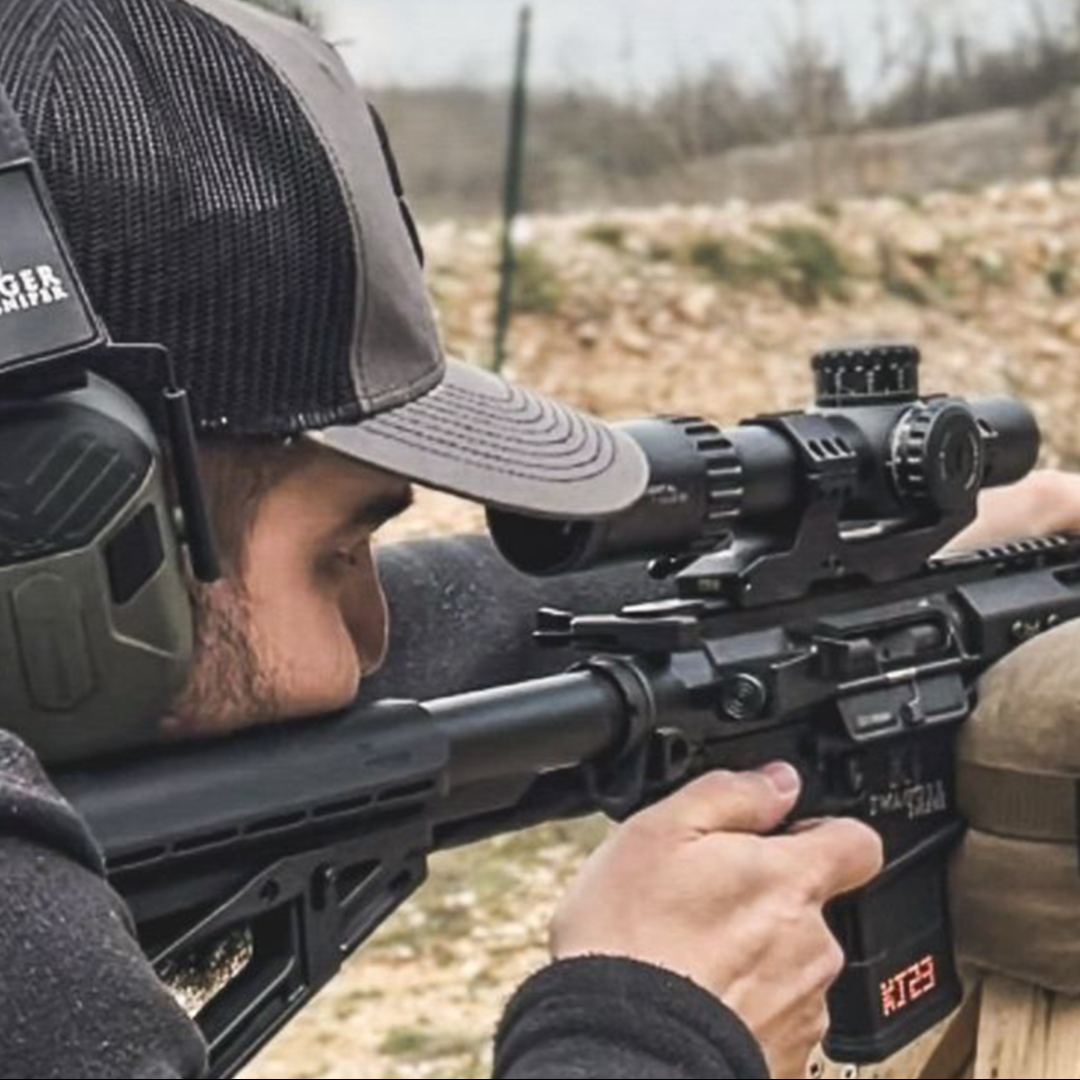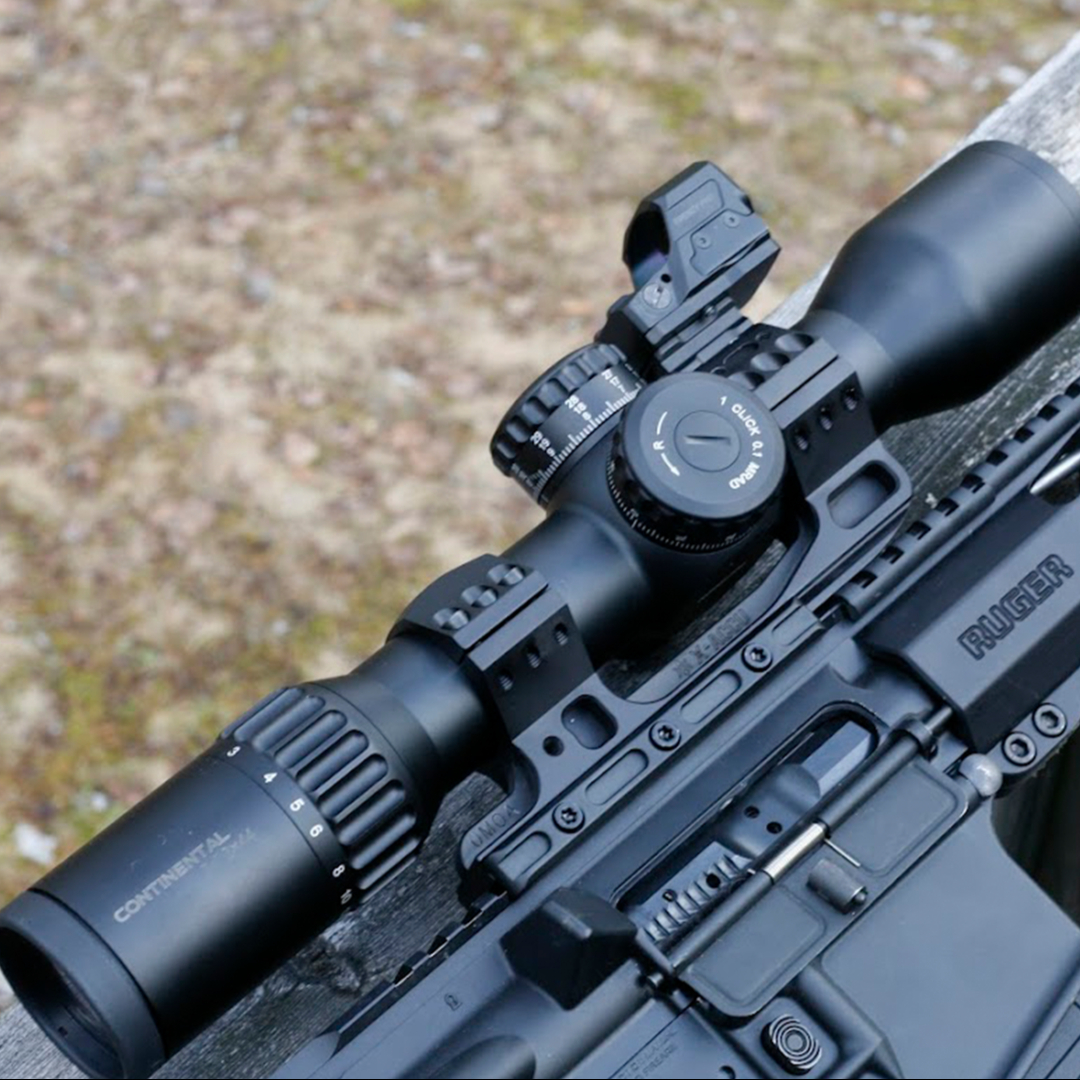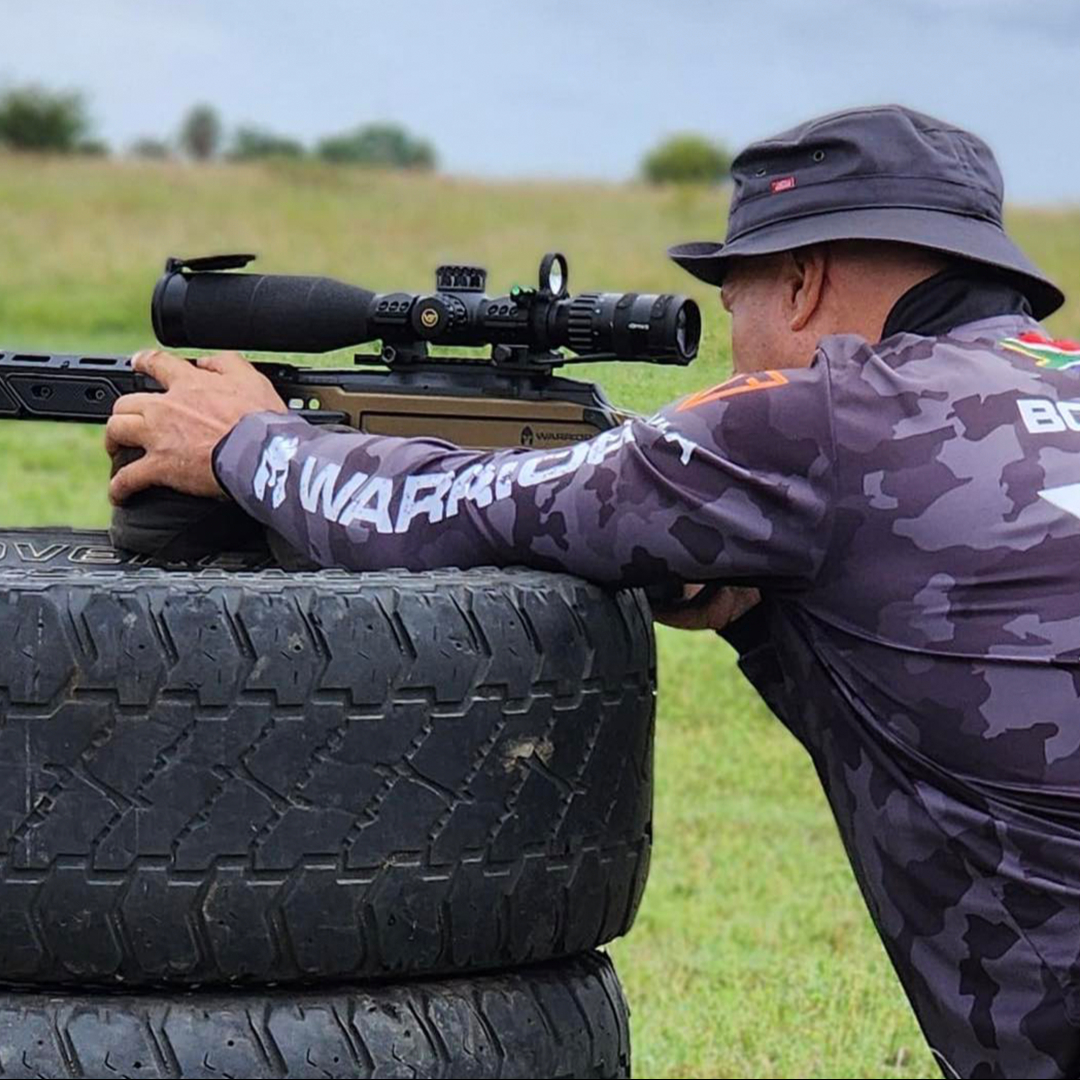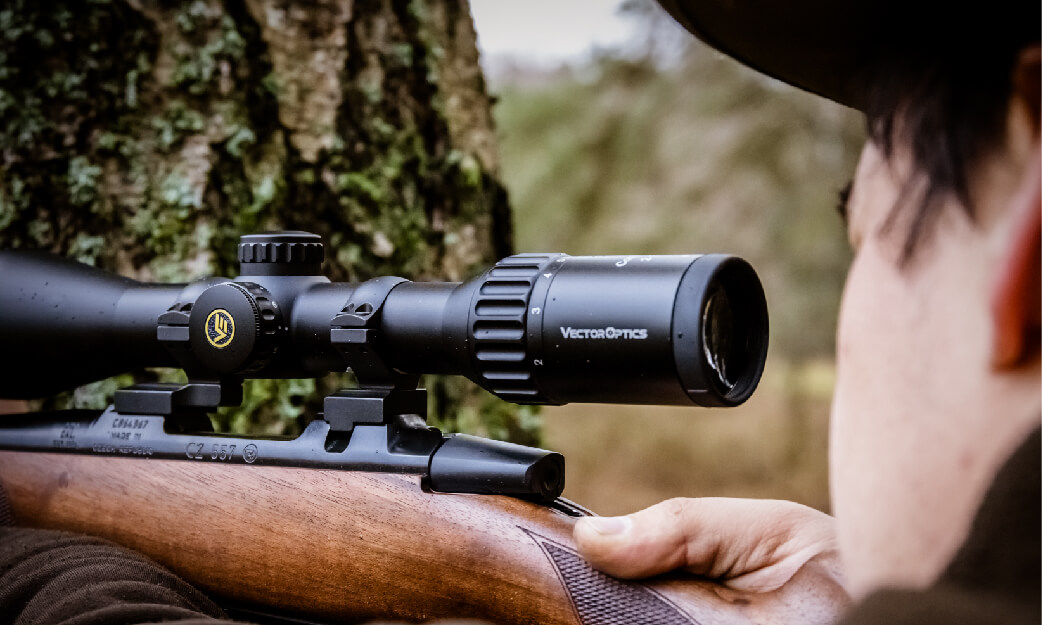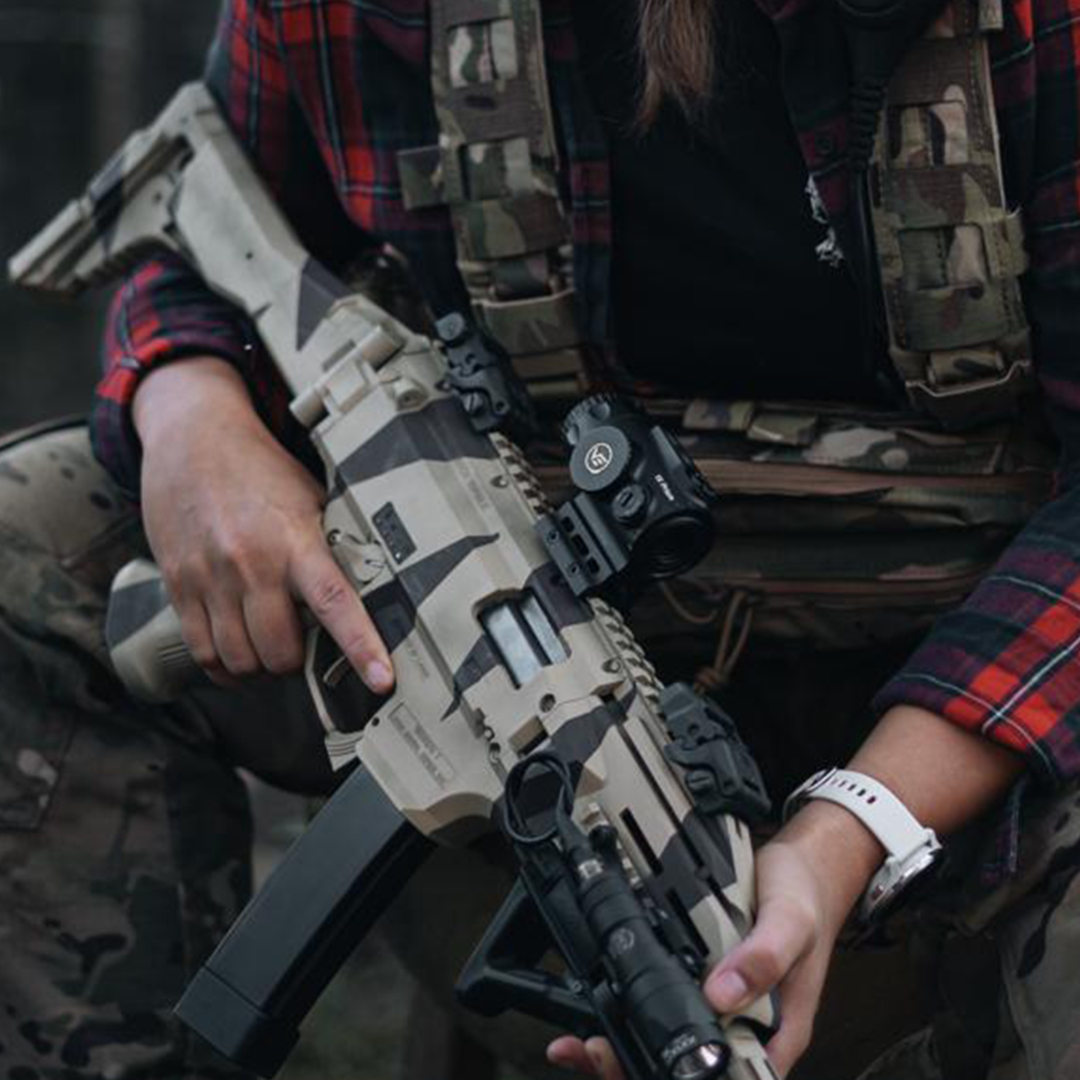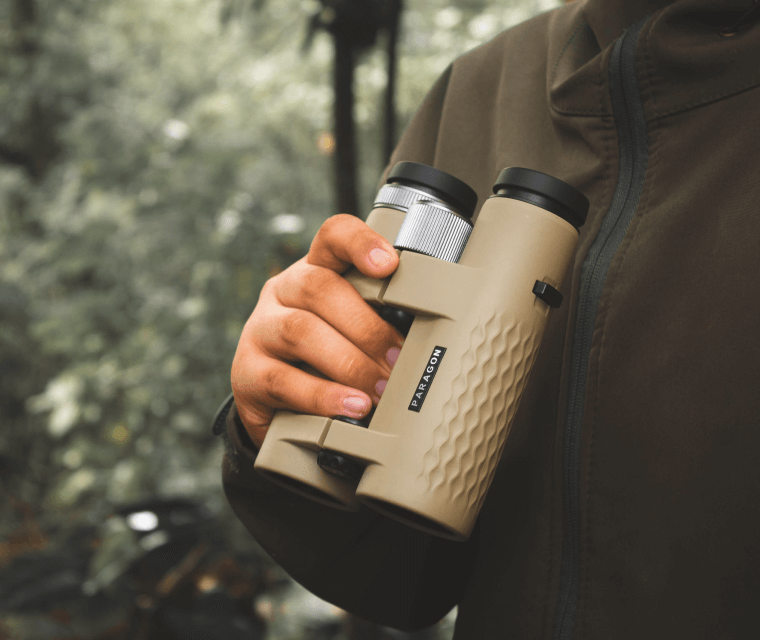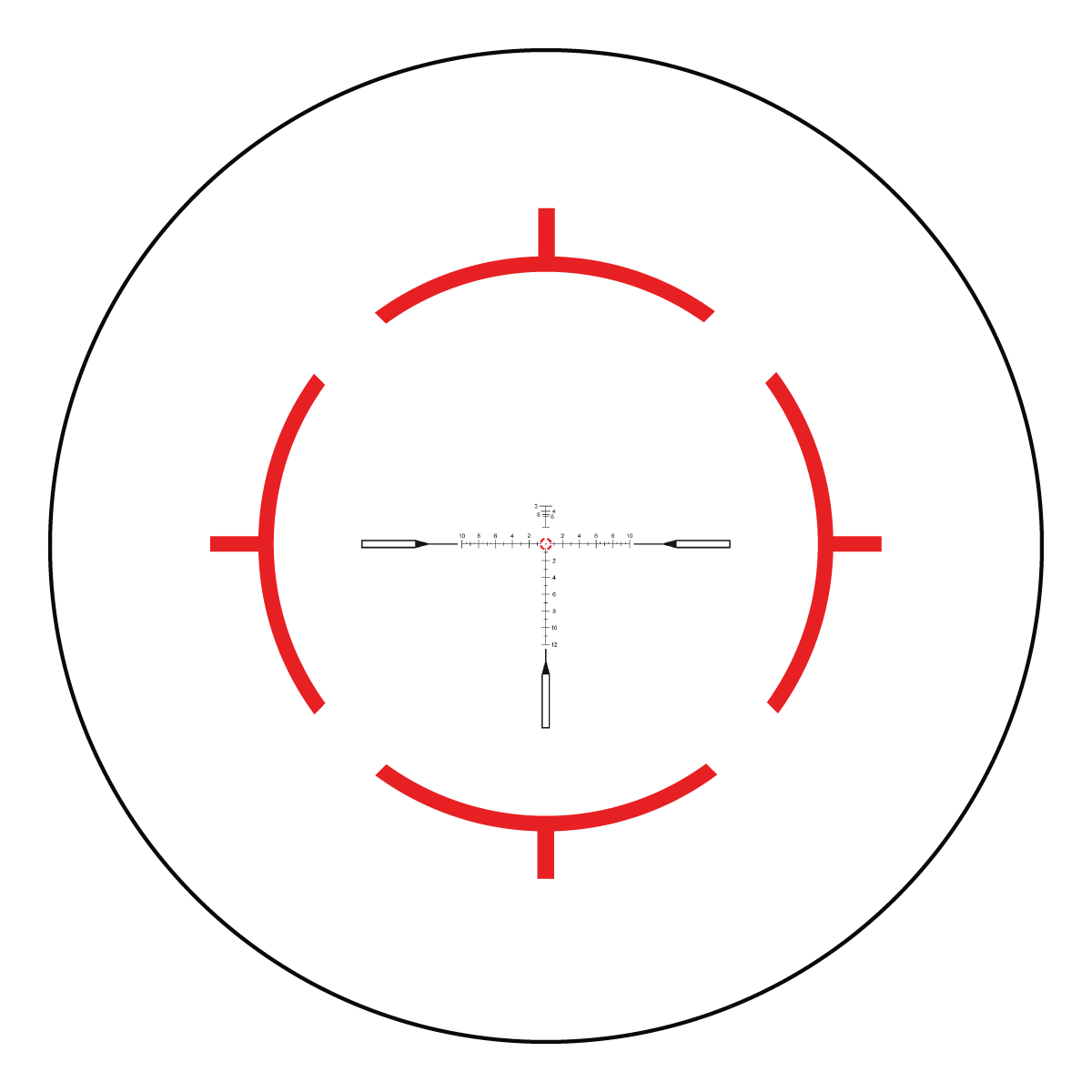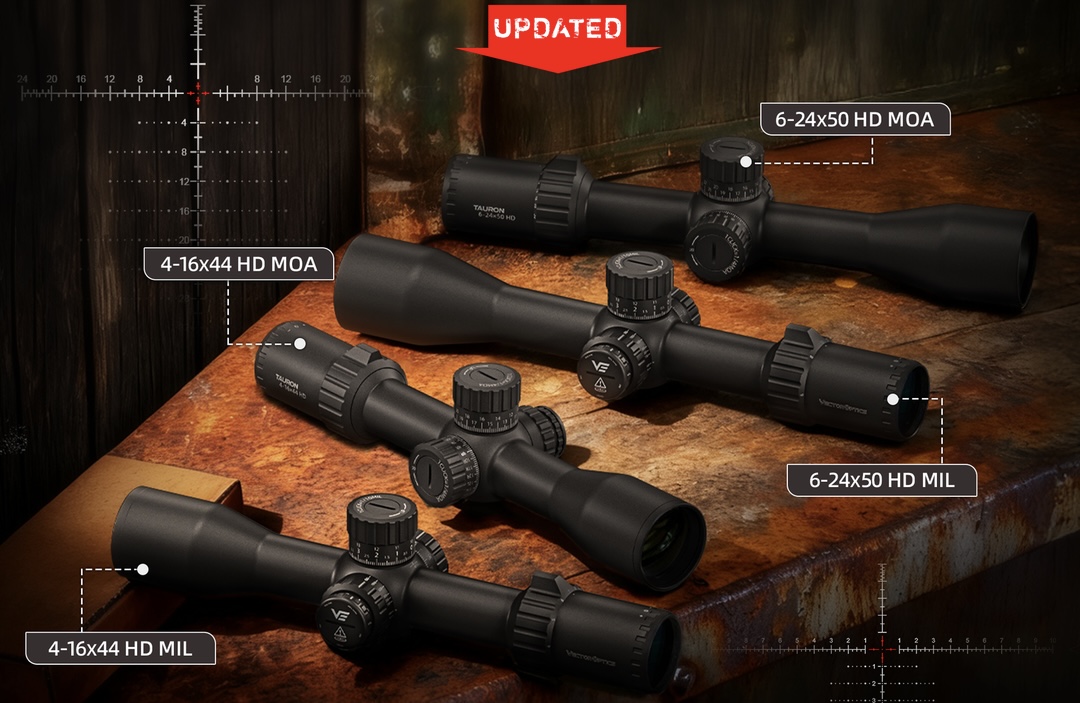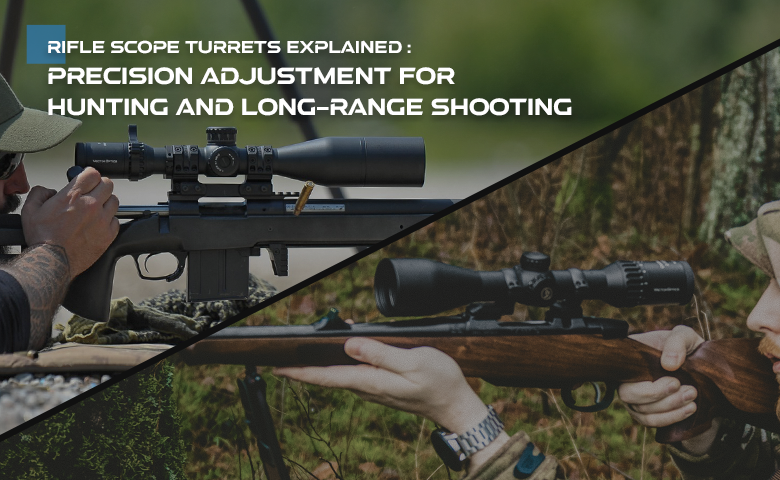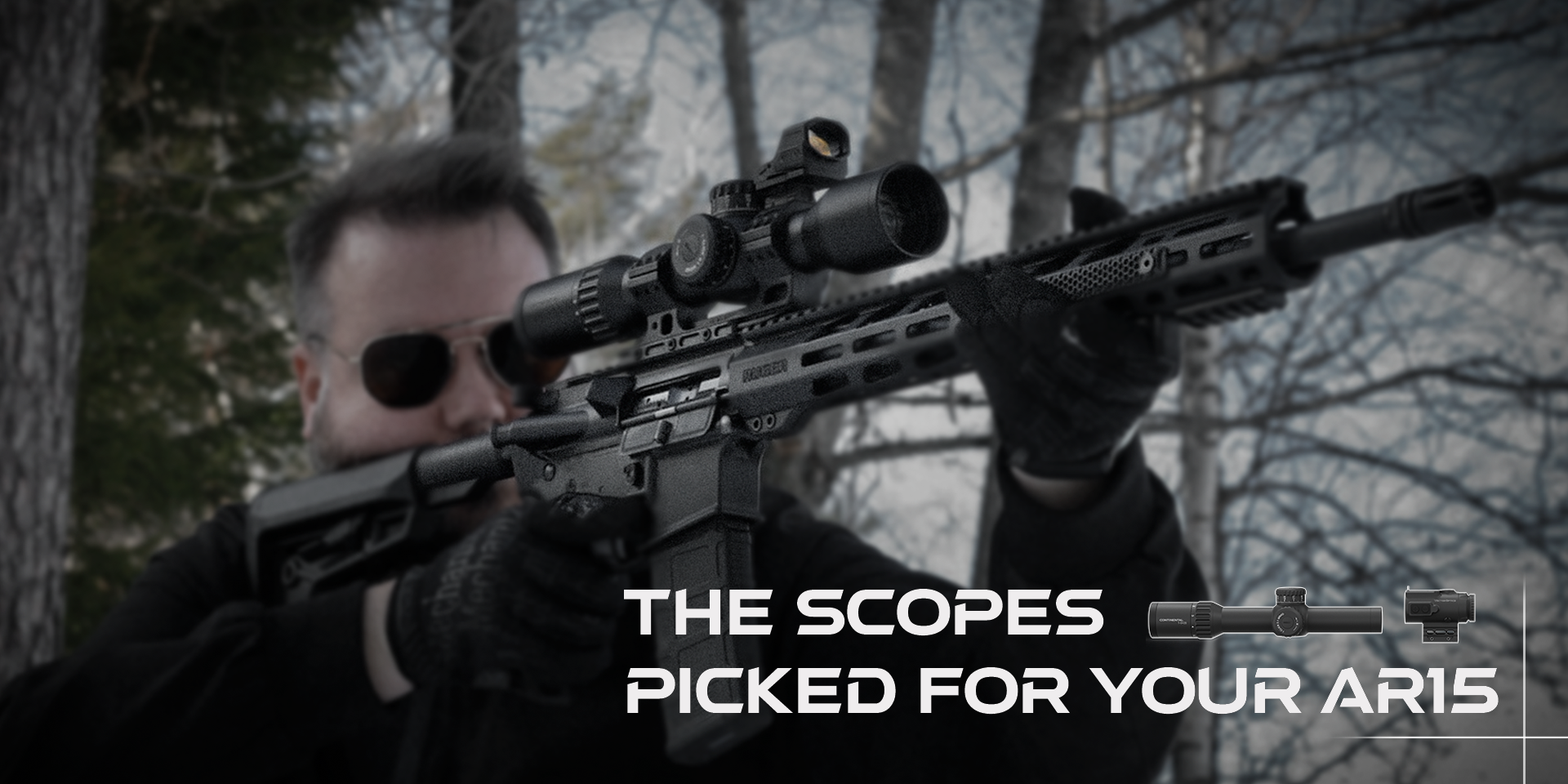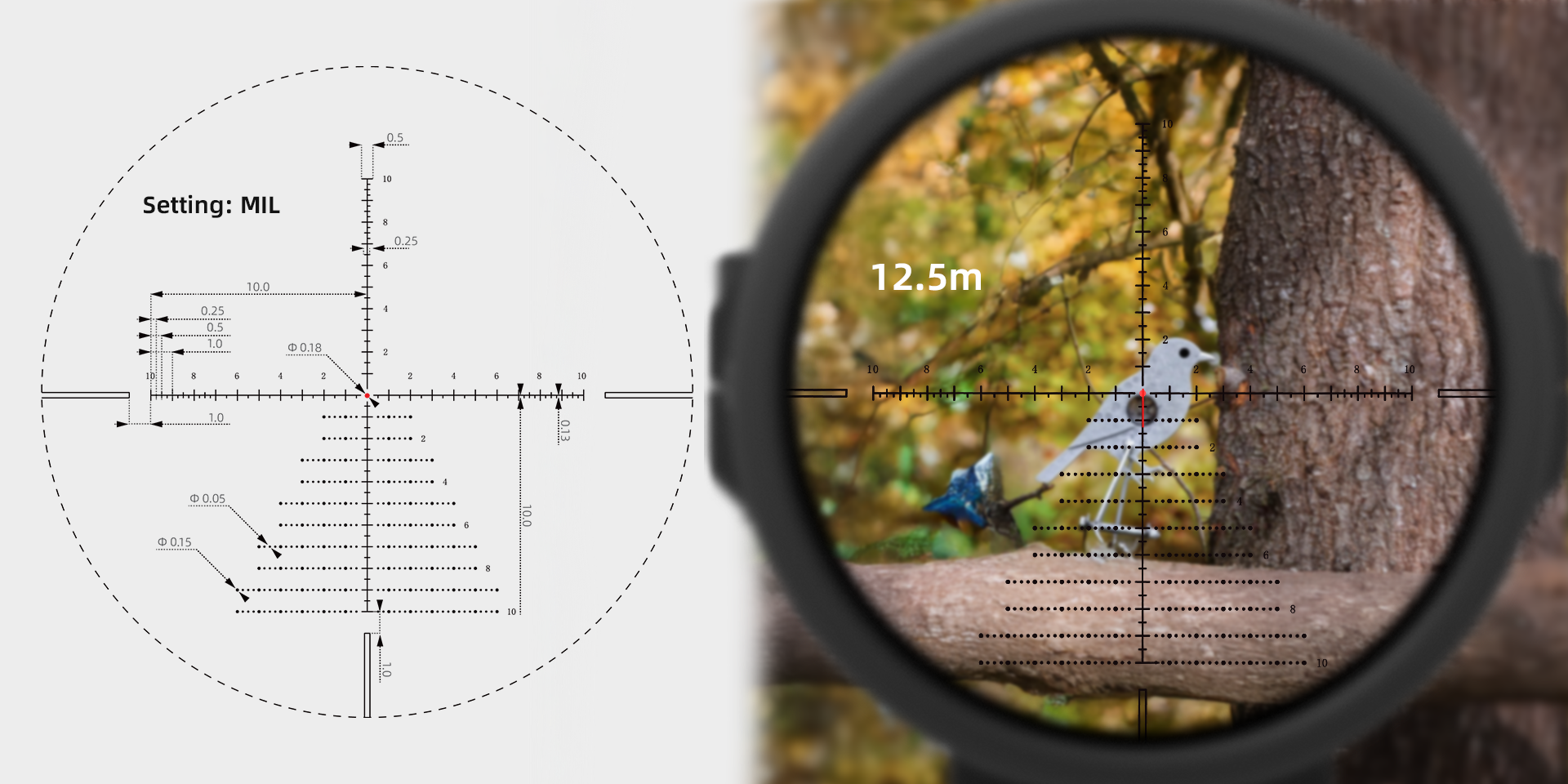Airguns have evolved far beyond simple backyard plinkers. They’re now used for precision training, competition, and small-game hunting. Thanks to new materials and advanced pressure systems, today’s airguns deliver impressive accuracy, consistent performance, and versatility for both new and experienced shooters.
Modern airguns use several power systems, but this guide focuses on the two most important types — PCP air rifle (Pre-Charged Pneumatic) and spring-piston air rifle — covering how they work, their pros and cons, and how to choose the right scope. Gas-piston, CO2 and multi-pump platforms are also noted but not discussed in detail.
1.PCP Air Rifles
1.1 What is a PCP Air Rifle?
PCP (pre-charged pneumatic) air rifles store compressed air in a built-in or screw-on reservoir and use that air to fire multiple shots without cocking or refilling between shots. Many PCP rifles will give around 25–40 effective shots per fill depending on reservoir size, calibre and power setting. Reservoirs are refilled using a hand pump, scuba tank, or small compressor, so you spend less time topping up in the field.
Like a car with a full tank, a PCP rifle is ready to go — you don’t need to “refuel” between every shot.

1.2 Pros and Cons of PCP Air Rifles
Advantages of PCP Air Rifles
●Excellent Consistency: Provide highly stable shot-to-shot performance for improved accuracy.
●Superior Precision: High-end PCPs can match or exceed rimfire accuracy for precision work.
●High Muzzle Velocity: Capable of delivering powerful and consistent air pressure.
●Very Low Recoil: Minimal recoil makes it easy to stay on target and shoot comfortably.
●Extremely Quiet: Operates with low noise, ideal for discreet hunting or backyard practice.
●Versatile Applications: Suitable for hunting, target shooting, and even precision competitions.
●Easy to Shoot: Just point and shoot, no need to cock or refill between shots.
Disadvantages of PCP Air Rifles
●Higher Initial Cost: Require additional equipment such as a scuba tank, hand pump, or compressor. Some high-end models retail above $2,000 USD.
●More Complex Setup: Refilling and maintaining air pressure add logistical complexity.
●Limited Field Refill: In remote areas, recharging the air reservoir can be inconvenient.
●Regulatory Considerations: High-power or long-range PCPs may be restricted or require permits in some jurisdictions.
1.3 Key Features to Consider for PCP Air Rifles
Magnification: Match to your application. For hunting, LPVOs (low-power variable optics) or MPVOs (mid-power variable optics) provide plenty of range. For competition, higher magnification is preferred — benchrest shooters often use scopes with up to 30× power or more. In PRS (Precision Rifle Series) matches, a practical range of 15–24x power is recommended, balancing target clarity with a wide enough field of view for fast target transitions.
Turrets: In hunting, capped turrets are ideal to avoid accidental adjustments in the field (e.g., in thick forest). For competition, exposed turrets with crisp, repeatable clicks and a zero-stop system allow fast, precise adjustments.
Reticle: Choose a simple crosshair or BDC reticle for hunting, which keeps aiming quick and intuitive. For precision or competition, opt for a fine duplex or MIL/MOA hash reticle to make accurate holdovers and wind calls.
Parallax / Side Focus: Adjustable parallax or side focus is essential when shooting beyond ~25–50 yards (~22.86-45.72m), ensuring the reticle stays sharp and the point of impact remains consistent.
1.4 Rifle Scope Recommended for PCP Air Rifles
●For game hunting: Choose rugged, compact scopes such as Veyron and Orion models — both airgun-rated with side focus starting from 10 yards (≈ 9.144m) (on most models). Veyron offers a compact and lightweight design as well as excellent optical performance, while Orion adds zero stop for full-size setups.
●For competition and precision shooting: Opt for airgun-rated Continental scopes with precise, repeatable turrets. The Continental x6 5-36x FFP Rifle Scope (SCFF-70) is designed for PRS, while the Continental x8 6-48x ED MOA SFP Rifle Scope (SCOL-TE52) and Continental x8 6-48x ED MIL SFP Rifle Scope (SCOL-TM52) excels in Field Target Competition, Benchrest Shooting and F-Class events.
*FFP (First Focal Plane) scales with magnification for accurate holdovers; SFP (Second Focal Plane) keeps reticle size constant for fine aiming.
2.Spring-Piston Air Rifle
2.1 What is a Spring-Piston Air Rifle
A more traditional air rifle is spring-piston air rifle. It is commonly called “springers” — store mechanical energy in a spring and piston. Cocking the rifle (by breaking the barrel or using a side/under lever) compresses the spring; when fired, the piston slams forward, compresses a column of air, and launches the pellet.
Like a classic wind-up clock, a spring-piston rifle must be “wound” before every shot.

2.2 Subcategory of Spring-Piston Air Rifle
Spring-powered air rifle is simple and popular with new shooters because cocking and loading are straightforward and no external air tank is required. There are three kinds of spring pistol air rifle, break barrel, sidelever and underlever.
●Break barrel air rifles are recommended for beginners because they are simple to operate and easy to maintain.
●Sidelever air rifles offer a good middle ground—smoother cocking and better ergonomics than a break-barrel without the bulk of an underlever, making them popular for casual and field shooters.
●Underlever air rifles suit experienced or professional shooters, as they provide very smooth cocking and can deliver higher consistency but need more careful handling and maintenance.
2.3 Pros and Cons of Spring-Piston Air Rifles
Mechanically simple, robust, and cheap to operate — spring-piston air rifles need no external gas or pump: just pick one up and shoot.
Pros:
●No external power required: convenient and ready-to-use in the field.
●Low running cost: simple design means cheaper upkeep.
●Great for beginners and plinking: well suited to casual shooting and backyard fun.
Cons:
●Two-stage, heavy recoil: a forward impulse as the piston moves, then a backward push as the spring relaxes.
●Less forgiving for precision work: strong single-shot recoil and typically need a break-in period for best accuracy.
●Optics sensitivity: requires spring-rated scopes and very secure mounts to avoid damage or loss of zero.
2.4 Key Features to Consider for Spring-Piston Air Rifles
Spring-tested scopes: Choose optics that have been tested for spring recoil. Etched reticles are preferred over fragile fiber-optic reticles, as they won’t shift or break under heavy recoil.
Turrets: Recoil can cause turrets to “walk,” so opt for rifle scope with turret lock, zero stop, or capped/clickless designs to prevent unintentional adjustments.
Parallax control: An AO (Adjustable Objective) or side focus is highly recommended for typical airgun ranges (10–50 yd / 9.14–45.72m). This keeps the reticle true without complicated adjustments. Learn more about the difference between AO and side focus.
Magnification: Low- or fixed-magnification scopes are preferred for break-barrel rifles. Their simpler, more stable construction handles the double recoil better and provides a forgiving eye box for faster, more consistent aiming.
By choosing the right combination of spring-rated scope, robust mounts, and appropriate magnification, you can maintain accuracy and protect your optics from the stresses of a springer.
2.5 Rifle Scope Recommended for Spring-Piston Air Rifle
Here are two rifle scopes for you to take a look: VIOC-05 SOI 3-9X40 AO and VIOC-06 SOI 4-12X40 AO.
●VictOptics SOI 3–9×40 AO Rifle Scope (VIOC-05): 3–9× magnification, 40mm objective, airgun-rated; adjustable objective parallax setting min from 5 yd — compact, great for close–mid range hunting and twitchy spring-piston recoil.
●VictOptics SOI 4–12×40 AO Rifle Scope (VIOC-06): 4–12× magnification, 40mm objective, airgun-rated; adjustable objective parallax setting min from 10 yd — higher magnification for mid to long ranges and tighter groups on precision shots.
If you want to know more about SOI MPVO series, go check this product introduction.
Most Vector Optics scopes are rated for break barrel air rifles, and we recommend models with simple, durable construction for spring-piston use.
●For spring-piston air rifles, the Hugo series offers wide FOV, FMC lens, 4" / 100mm eye relief, and close focus from 10 yds. The Hugo 3–12×40i Fiber Rifle Scope (SCOM-44) with side focus adds fiber-illuminated reticle and 1/10 MIL turrets for precise, airgun-rated performance.
●The Matiz series features rugged 1" tubes, FMC optics, and simple crosshair reticles. The Matiz 4-12x40 AO Rifle Scope (SCOM-29) provides parallax adjustment from 10 yds and 1/4 MOA clicks for reliable accuracy.
3.Gas Piston Air Rifle
3.1 What is a Gas Piston Air Rifle
Gas piston (a.k.a gas-ram) air rifles use a sealed, pressurized gas cylinder instead of a metal coil spring to drive the piston that compresses air and launches the pellet. Mechanically they work like a spring-piston—piston compresses air—but the gas ram stores energy in a sealed chamber (usually nitrogen) and releases it with a smoother, more linear impulse.
Like the hydraulic suspension in a car, a gas-piston system delivers a more stable shooting experience than traditional spring mechanisms.
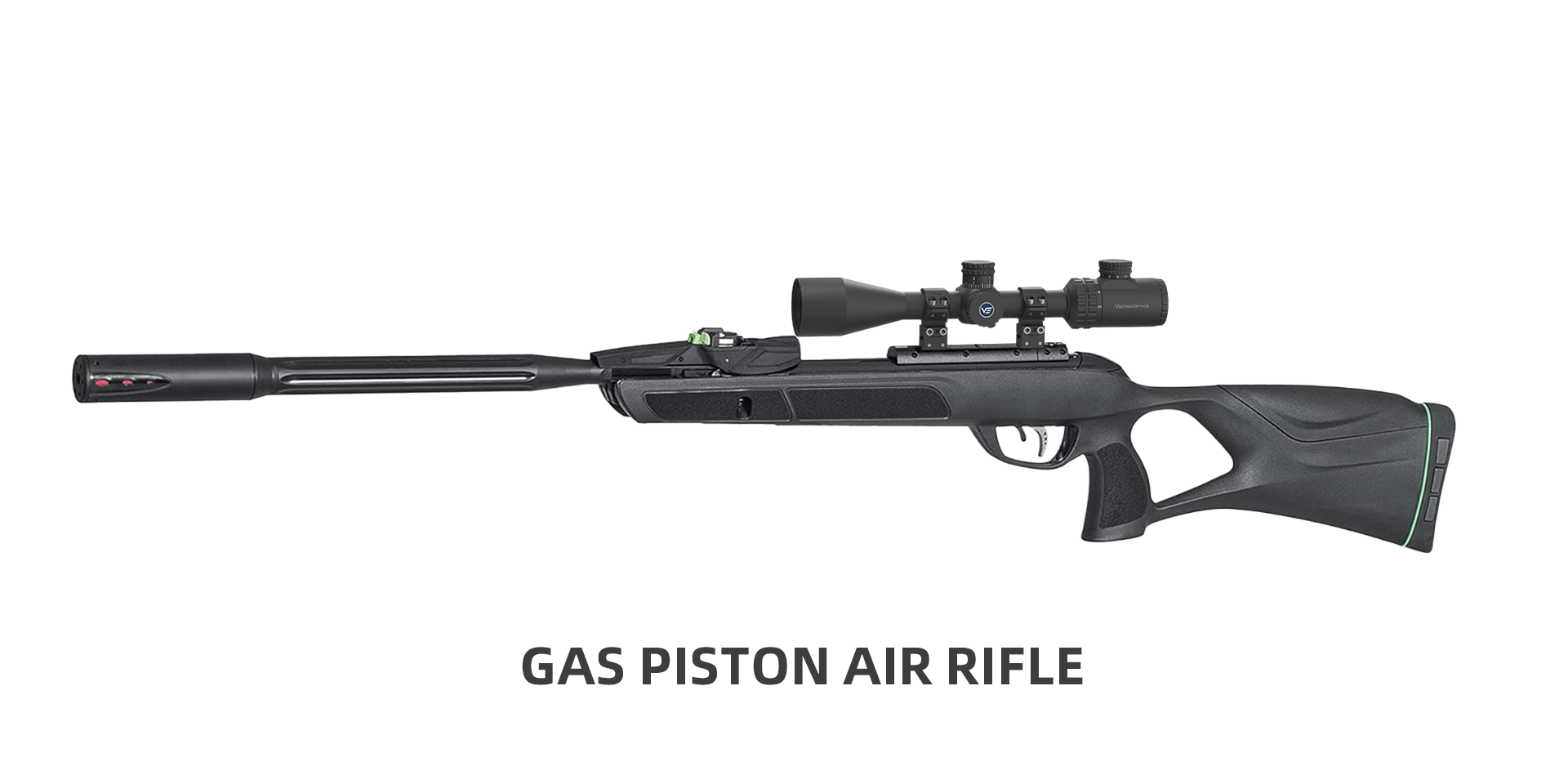
3.2 Key Features to Consider for Gas Piston Air Rifle
Gas-piston (gas-ram) rifles deliver a smoother recoil impulse than classic springers, but they still subject optics to repeated mechanical shock. When choosing a scope for a gas-piston rifle, prioritize durability and repeatability — here are the key features to look for:
●Reticle: A etched glass reticle is more durable and stable than fragile fiber-optic reticles under repeated impact.
●Turret Function: Turret lock or zero stop feature prevent turret “walk” from recoil; capped or clickless designs add extra protection.
●Parallax Control: AO or side focus is recommended for typical airgun ranges (≈10–50 yd) to keep the reticle true.
●Moderate magnification: Gas-ram’s smoother impulse allows for medium magnification, but avoid very high power unless the scope and mounts are rugged.
●Robust chassis and tube: Thicker tube walls, strong internal mounting, and quality lens bonding improve shock resistance.
●Generous eye relief: It helps maintain sight picture and reduces risk of impact to the shooter’s face.
3.3 Rifle Scope Recommended for Gas Piston Air Rifle
●Hugo 3–12×40i Fiber SFP Rifle Scope (SCOM-44): airgun-rated, fiber-illuminated reticle, turret lock, side focus from 10 yd, 4 in (100 mm) eye relief — durable and recoil-tolerant for gas-piston mid-range work.
●VictOptics SOI 3–9×40 AO Rifle Scope (VIOC-05): airgun-rated; 1-inch tube size, adjustable objective parallax setting from 5 yd; 1/10 MIL clicks, 18 MIL elevation; 4 in (100 mm) eye relief; 40 mm FMC; side 5-level green/red illuminated reticle — well suited to gas-piston (gas-ram) air rifles.
●VictOptics SOI 4–12×40 AO Rifle Scope (VIOC-06): airgun-rated; adjustable objective parallax setting from 10 yd; 1/10 MIL clicks, 20 MIL elevation; 4 in (100 mm) eye relief; 40 mm FMC; VNM-1 MIL wire reticle with side 5-level green/red illumination — ideal for gas-piston (gas-ram) platforms.
4.CO2 Air Rifle
4.1 What is a CO2 Air Rifle
CO2 guns split into CO2 pellet rifles (faster follow-ups for practice) and CO2 BB pistols (pistol-style plinkers); hybrids include blowback models and multi-feed/switchable BB-/pellet designs. Many are toy-oriented for close-range fun and casual shooting.

4.2 Key Features to Consider for CO2 Air Rifle
●Low-to-Mid Magnification: Choose ~2–7× or 3–9× to balance fast target acquisition and sufficient detail at 20–40 yd (18.29–36.58m). Red dot sights also perform well for close-range plinking.
●Parallax Adjustment from 5 Yards: AO or side focus beginning at 5 yd → 50 yd (4.6–45.7 m) keeps the reticle sharp at typical CO2 shooting distances.
●Reticle Type: Etched reticles or high-visibility fiber-center dots both work—pick etched for precision, fiber-dot for faster acquisition.
●Generous Eye Relief & Forgiving Eye Box: Ample eye relief and a tolerant eye box make rapid follow-ups safer and more comfortable.
●Optical Quality & Sealing: Good glass and coatings for clear, bright images plus fogproof/waterproof sealing to maintain repeatable performance.
4.3 Rifle Scope Recommended for CO2 Air Rifle
●VictOptics ZOD 1-4x20 LPVO Rifle Scope (OPSL18): A lightweight LPVO (325 g) ideal for CO2 rifles at 20–40 yd. Its 1–4× range and long eye relief ensure fast, comfortable aiming, while the VMD-2 MIL reticle offers quick holdovers. Fully multi-coated lenses provide bright clarity, making it perfect for close-range plinking and casual precision.
●VictOptics ZOD 1-4x20 IR LPVO Rifle Scope (OPSL21): For a lit-reticle option, consider the this LPVO, which adds a illuminated reticle with 5-level red/green brightness while keeping the same lightweight, fast-acquisition design.
●VictOptics Z3 1×22×33 Red Dot (RDSL03): Ultra-light 160 g (5.6 oz) red-dot with four reticle options and red/green illumination; compact, fast target acquisition for close-range CO2 plinking and carry-light setups.
●Other budget-friendly options also well suited for CO2 air rifles include VictOptics SOI 1.5–5×20 MPVO Airgun Scope (VIOC-01), VictOptics JAV 4×32 Rifle Scope (OPSL19), VictOptics IPM 1×23×34 Four-Reticle Red Dot Sight (RDSL15), and VictOptics Z1 1×23×34 Multi-Reticle Dovetail Red Dot Sight (RDSL20).
5.Multi-Pump Pneumatic Air Rifle
5.1 What is a Multi-Pump Pneumatic Air Rifle
Multi-pump pneumatic rifles use a built-in lever to pressurize an internal reservoir — more pumps mean more muzzle energy. They’re portable, low-cost, and let you vary power on the fly, ideal for casual plinking, backyard practice, and short-range small-game hunting, but their top-end power and shot-to-shot consistency are lower than PCP rifles (which offer longer range and more shots per fill but need charging gear).
Multi-pump models are either fixed-pump (preset strokes, e.g. 3/5/10) or variable-pump (user selects ~3–10 pumps).
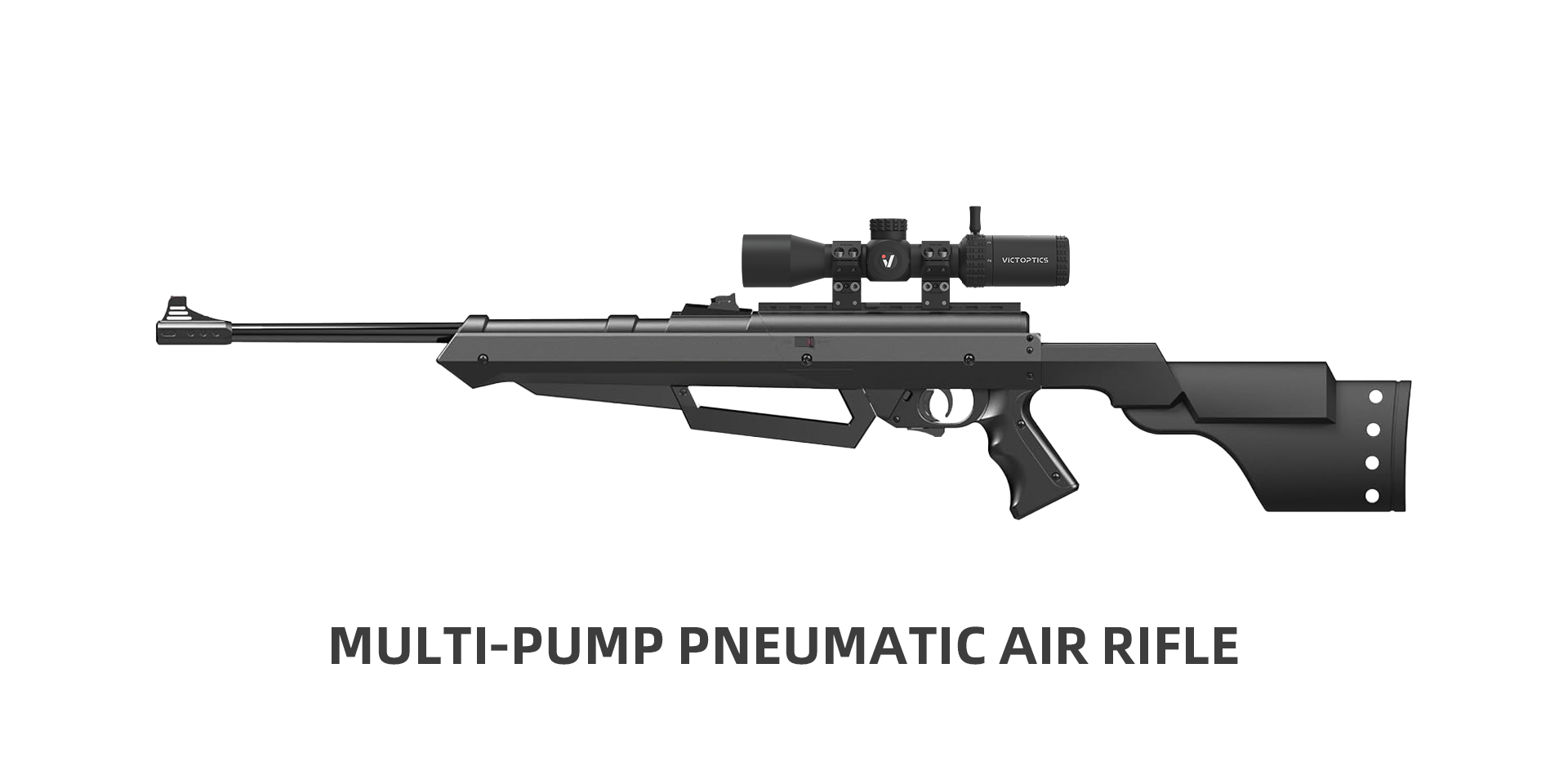
5.2 Key Features to Consider for Multi-Pump Pneumatic Air Rifle
●Airgun-Rated Durability: Built to handle repeated pressure cycles and mild recoil without losing zero.
●Etched Reticle: Resistant to vibration and shock, ensuring long-term optical stability.
●Adjustable Parallax (AO / Side Focus): Keeps the image sharp and reticle true at typical airgun ranges (10–50 yd / 9.14–45.72m).
●Low-to-Mid Magnification: Easier target acquisition, wider field of view, and a more forgiving eye box. Red dot sights also perform well for close-range plinking.
5.3 Rifle Scope Recommended for Multi-Pump Pneumatic Air Rifle
●VictOptics SOI 2-7×32 Airgun Scope MPVO (VIOC-02): 2–7× with capped turret for fast target acquisition and mid-range work; 32 mm FMC objective, 5-gear red/green illuminated reticle, lightweight 1″ monotube (328 g / 11.6 oz), and 4 in (100 mm) eye relief — rugged and comfortable for multi-pump field use.
●VictOptics IPM 1×23×34 Four-Reticle Red Dot Sight (RDSL15): ultra-light 115 g / 4.0 oz red/green reflex with four reticle patterns and 5+5 illumination levels — fast target pickup for close-range plinking with MPP rifles.
●Other budget-friendly options including VictOptics SOI 3-9×40 Air Rifle Scope MPVO (VIOC-03), VictOptics Z1 1×23×34 Multi-Reticle Dovetail Red Dot Sight (RDSL20), and VictOptics Z3 1×22×33 Red Dot Sight (RDSL03), all offering reliable build quality, simple operation, and clear optics for fun, accurate plinking and everyday shooting practice.
6.Making the Right Choice for Your Airguns
Airguns have come a long way — from backyard plinkers to precision tools for training, competition, and small-game hunting.
For a dependable and budget-friendly option, try VictOptics — Vector Optics’ sub-brand offering affordable, precise scopes and red dots for air rifles and airguns to boost accuracy and performance.
Whether you’re just starting or refining a long-range setup, choosing the right power type and matching scope will unlock the full potential of your airgun.








